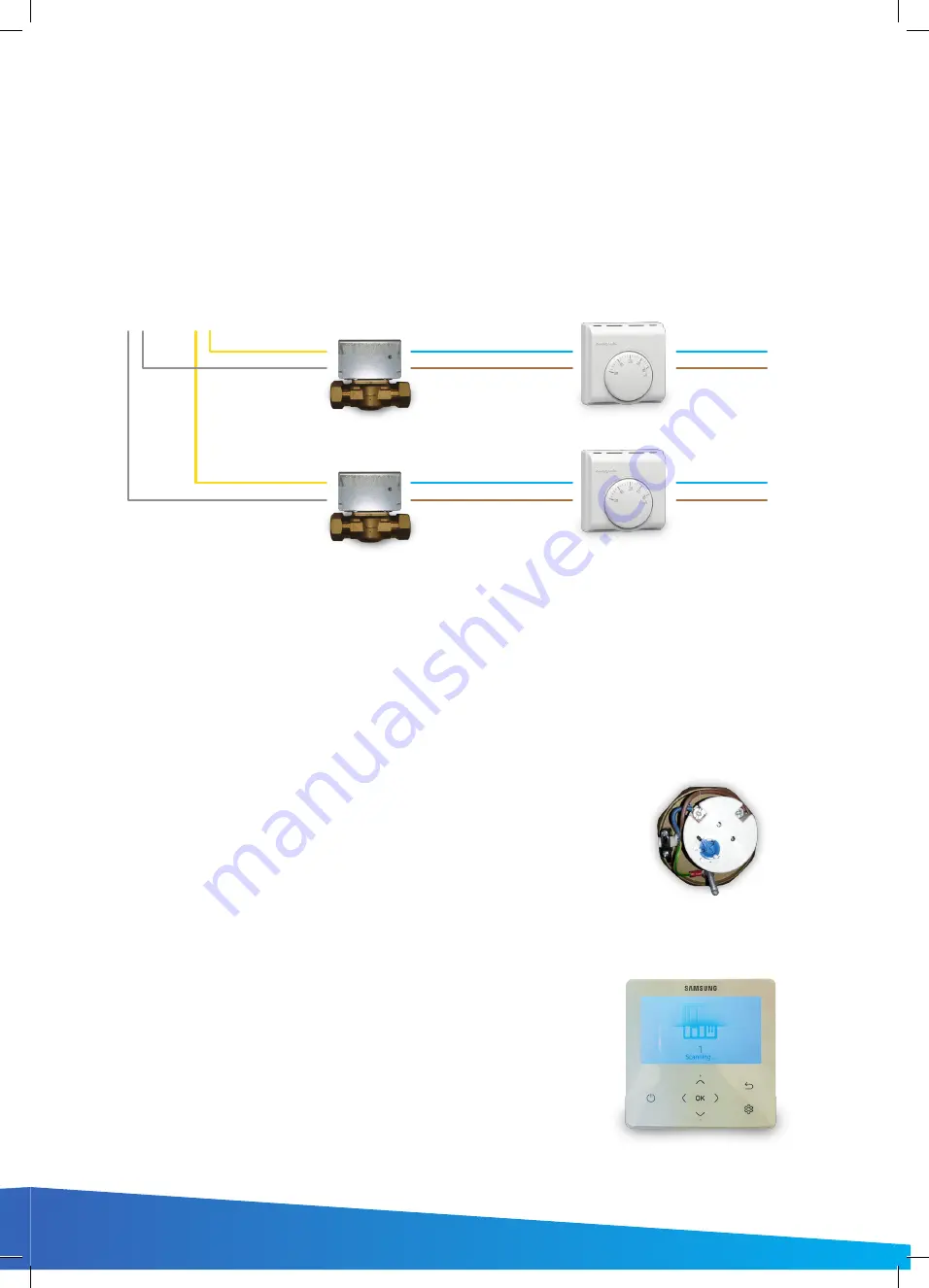
When commissioning this system, you need to follow the procedure below don’t skip this, if you do the unit won’t work properly
Fill in the warranty card on page 4 and 5. Hand the end user pages 6-8.
Start-up Procedure
Filling and flushing, when installing any Heat pump, we insist on a thorough system flush prior to connection in line with the Building
Regulations for England and Wales, Part L, 2006. Using the power flusher fill the system with water and 25% Propylene Glycol, there is no
pressure sensor in the unit so we can operate from open vented to 3 bar maximum.
Setting up the cylinder immersion heater
To avoid the immersion heater cutting out before the legionella function is complete
you have to set the stat in the immersion heater to 70°C minimum, on a Telford cylinder set it to 5.
Check the tank sensor
The blue tank sensor MUST be installed above the immersion heater and it must be
securely fixed in the tank right into the back of the pocket, I would use heat paste and
cable ties to do this.
Powering Up
Makes sure all your room thermostats are off and all underfloor run signals are off.
Apply power to outdoor and indoor unit, you should see red lights on the PCBs of both
units. If there are no lights you will need the electrician to check for power.
The remote controller will light up immediately, it will say scanning 0, after a few
seconds it will say scanning 1.
Scanning 0 means the indoor unit is ok, scanning 1 means the outdoor unit is ok. If
scanning 1 does not show after 30 seconds check the outdoor unit is powered up.
Remove the cover and check the PCB is lit up.
Valve Z2
Power In
Valve Z1
Run Signal to
Heat Pump
As many heating zone valves as you like can be connected to the system.
B20
B22
Power In
Heating & Hot Water Installation













































